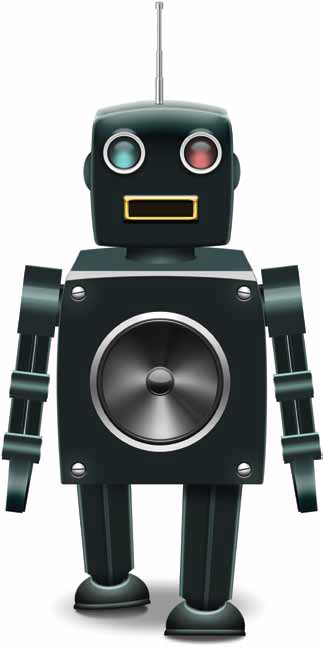Like line arrays 10 or 15 years ago, smart loudspeakers seem poised to become the next big thing in loudspeakers. This future, however, may be somewhat confusing and even a little messy. Clearly smart loudspeakers bring lots of benefits; the potential for innovation is enormous. But, like line arrays, smart loudspeakers aren’t the solution to every problem. And some smart loudspeaker technology appears to be a classic “solution in search of a problem.”
Let’s loosely define a smart loudspeaker as something more than just a powered loudspeaker with EQ. That “something more” may include sophisticated DSP, network communication, monitoring and self-diagnostics, and so on.
Adding smart loudspeaker technology to a line array allows the magic we call beam forming and beam steering. At InfoComm, any number of vendors demoed steerable line arrays and other advanced beam-forming/beam-steering technology.
Of course, smart loudspeakers can offer value well beyond beam steering. Years ago, I designed an arena system with a ring of delayed loudspeakers over the seating in support of a small central array and another end array. The system could be reconfigured (level, delay, and EQ) for multiple event types. For this purpose, every loudspeaker in the ring had a home-run cable back to the equipment rack—lots of loudspeaker cable. Today, I’d just install smart loudspeakers with a network to achieve the same, or better, results.

Smart loudspeaker technology can be used to monitor loudspeakers and their electronics and even do some self-diagnostics. All of that has potential for mass notification and emergency evacuation systems where the loudspeakers must be monitored and verified to meet code. However, I must emphasize the word “potential” here because code compliance is a complex subject where performance and cost are only part of the process.
It won’t be too long before smart loudspeaker technology fits on a chip and the costs are low enough that we can economically create smart ceiling loudspeakers. These will be potentially useful in code-driven life safety applications— imagine the flexibility of being able to address and control every loudspeaker in a multi-sectional hotel ballroom.
But the real promise of smart loudspeakers won’t arrive until the electronics and transducers are truly integrated. I’m talking about the level of integration we see in a modern automobile engine where the engine is full of sensors, and everything from fuel injection to spark timing and even valve timing is controlled by the computer. Although I don’t care for the complexity I see under the hood, modern engines run dramatically better than those from the pre-computer era. I expect nothing less from the next generation of smart loudspeakers.
In all this good news, I have two concerns. The first is our normal tendency to overuse a new technology. There will be projects where we cannot supply AC power to the loudspeaker location for safety or cost reasons. In those cases, conventional passive loudspeakers will still be needed. However, we may still be able to use some smart loudspeaker technology via purpose built amplifiers.
My second concern is using the technology to provide products that customers don’t want or need. Does anyone remember “processed loudspeakers” from the 1980s? These early attempts at smart loudspeakers used techniques like sliding high-pass filters to protect the loudspeakers at the expense of highly variable sound quality. With today’s smart loudspeaker technology, the temptation to produce even more products like this will be high.
So we have a job ahead of us. We need to encourage the innovations while doing our best to channel them into products and applications that make sense for our customers. It won’t always be easy, but I promise it’ll be fun!
Chris Foreman (chris@proaudioweb.com) is a career audio professional, educator and writer. Co-author of the Handbook for Sound Engineers edited by Glen Ballou and Audio Engineering for Sound Reinforcement with consultant John Eargle, Foreman offers marketing, publicity, and management consulting through his company Wordworks.
The Silver Lining
Like any product, smart loudspeakers require tech support, warranty repair, and documentation. But, by their nature, smart loudspeakers are substantially more complex than conventional loudspeakers. For this reason, suppliers (manufacturers, distributors, dealers) will need to supplement their usual tech support with field applications support and training.
While that may seem like just another profit drain, there’s a silver lining. For decades now, we’ve been bombarded with increasing levels of marketing messages. For a while, they came mostly through print media, radio, and television. Now, we’re seeing them on our computers and even on our phones. The “noise level” of these marketing messages is so high that most of us have learned how to ignore them. We even use computer and smart-phone apps to filter them out.
So, how do we reach our customers through this ever-increasing noise? The answer is direct customer contact via the training and applications support provided for smart loudspeakers, AV networking, and other high-tech products and systems.
A growing number of AV manufacturers have already implemented this kind of program. Some have high-profile programs with leased tractor-trailers full of equipment that travel from event to event. But dealers and distributors can have successful programs as well, and you don’t need a mega-budget to achieve great results. I recently spoke with an east coast integrator who serves the Korean-American church community and provides bi-lingual training and support. This kind of customer focused program is a great way to reach today’s diverse community of technically savvy customers.
—C.F.
